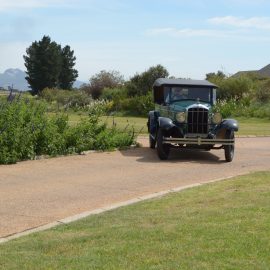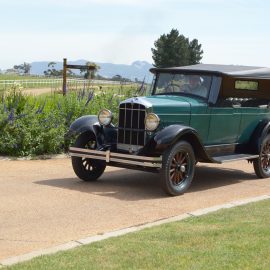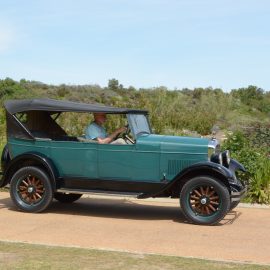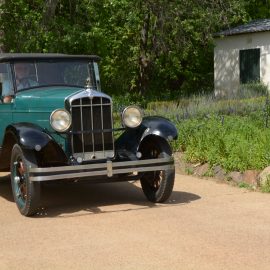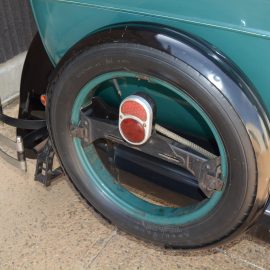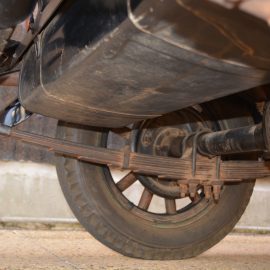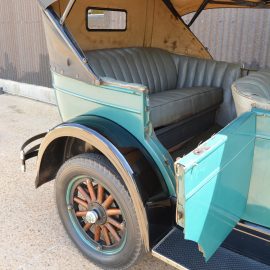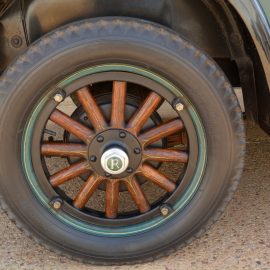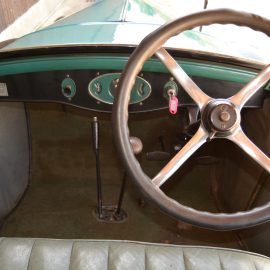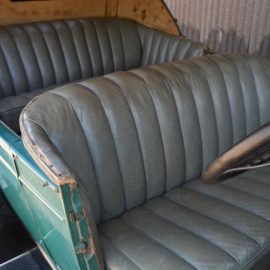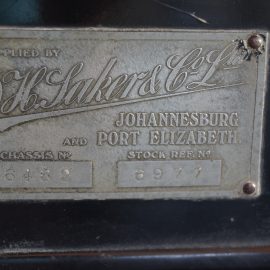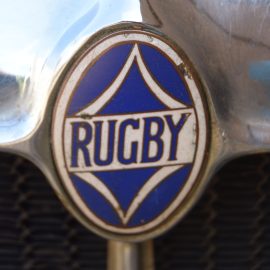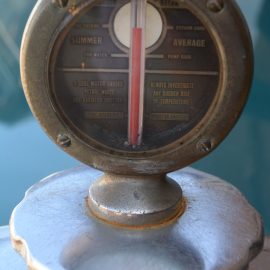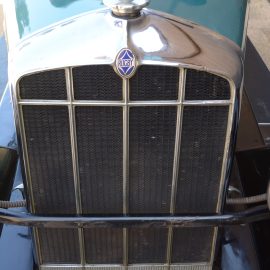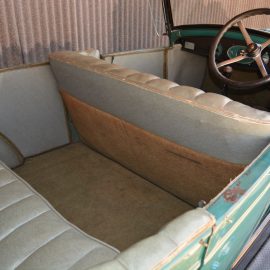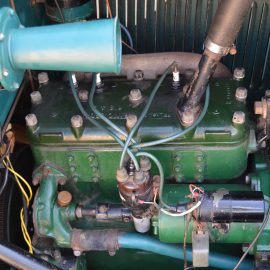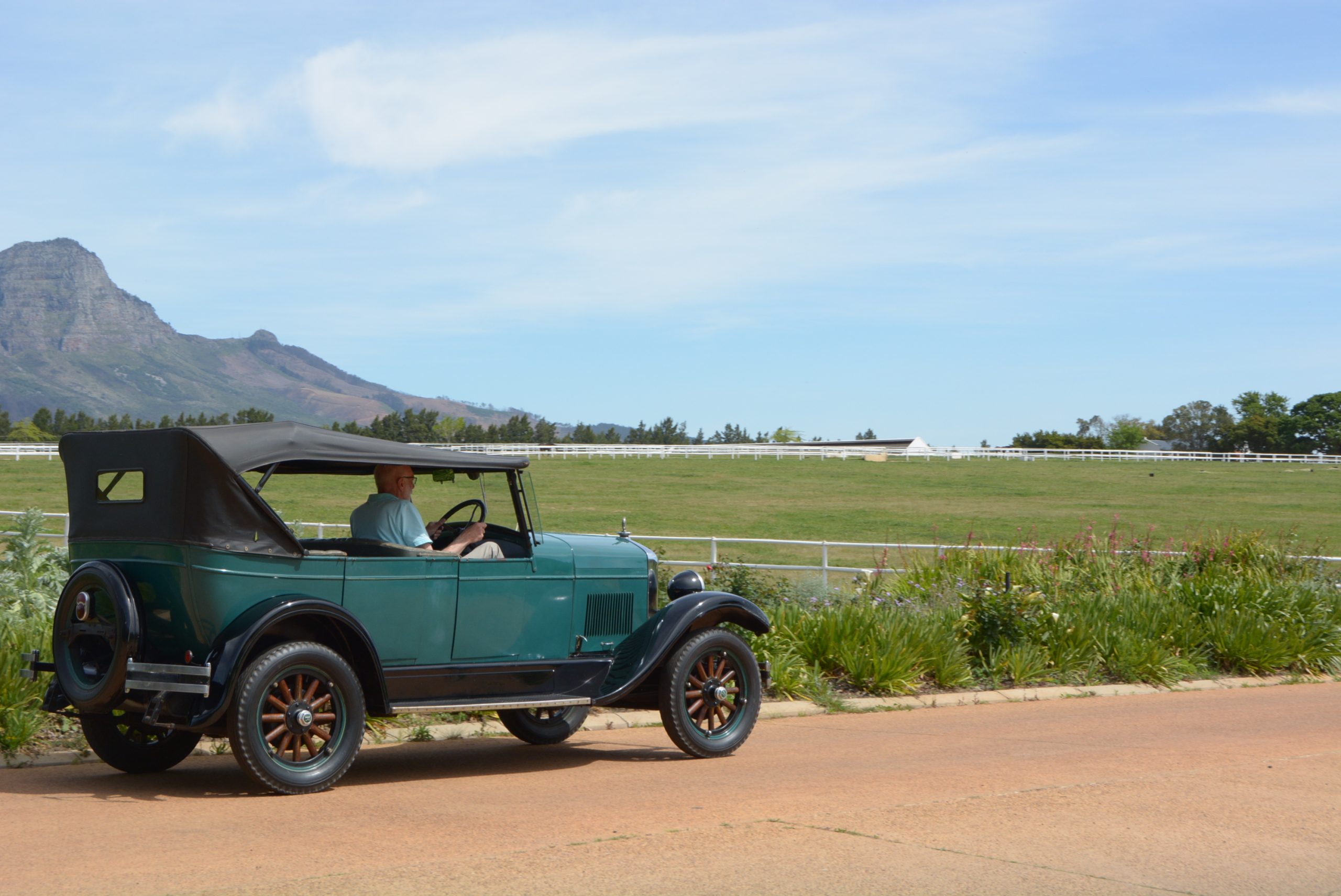
30 Jan Collection In Action: 1928 Rugby
These days we are all well aware of various automotive brands being part of a group, but when did it all begin? William C Durant was a pioneer of the concept, and Rugby was only one player in the game plan. Commentary by Mike Monk…
When it comes to multi-brand automotive conglomerates, General Motors will doubtless immediately spring to mind as one of the longest-running organisations to have numerous brands under its control. In fact, it was the first. It all began with William Crapo Durant, who had a stormy relationship with GM before leaving the company and taking them on with his own short-lived brands that included Rugby, which was a Star by any other name. But before describing the FMM’s Rugby Tourer, it is worth recounting Durant’s business history…
‘Billy’ Durant was born on 8 December 1861 to wealthy Massachusetts couple William Clark Durant and Rebecca Folger Crapo. Billy dropped out of high school to work in his grandfather’s lumberyard before partnering Josiah Dort to create the Coldwater Road Cart Company. In 1886 he founded the Flint Road Cart Company with $2 000 in start-up capital, turning it into a $2-million business with sales around the world. Within the next five years, the Durant-Dort Carriage Company had become America’s – and some believe the world’s – leading manufacturer of horse-drawn vehicles. It was during this time that Durant conceived the system of dealer franchises.
Despite initial scepticism of horseless carriages, in 1904 Durant was approached to become general manager of Buick, the Flint-based car company with few sales and large debts. Durant displayed his sales skills by exhibiting Buick (which had only built 37 cars to date) in a New York auto show, returning with orders for 1 108 cars, and his business acumen led to him becoming president. Durant and Samuel McLaughlin of Canada signed a 15-year contract to build Buick powertrains before, on 16 September 1908, Durant founded General Motors Holding Company with $500 000 in Buick stock that Durant traded McLaughlin for $500 000 of McLaughlin stock, making McLaughlin one of GM’s biggest shareholders. That same year, GM bought both Buick and Oldsmobile and started an automobile conglomeration on a major scale. In 1909 Durant bought Cadillac, Oakland (later called Pontiac), and many component- and paint-manufacturing companies, merging them with GM.
An $8-million deal to buy Ford was turned down by the bankers and as Durant had become financially overextended, he was forced from management of GM Holding Co. He immediately set out to create another GM, starting with the Little car – named after its founder, William H Little – to compete with the Ford Model T. But this was not to be and in 1911 he went into partnership with Louis Chevrolet to establish Chevrolet. However, a disagreement with Chevrolet resulted in Durant buying out his partner in 1914. Durant went to McLaughlin in 1915 to put Chevrolet in Canada and the two men set about buying enough shares to regain a controlling interest in GM. Durant was made president in 1916 and GM Corporation was formed two years later, but in 1920 he was ousted once more after the new car market collapsed.
Undaunted, Durant lost no time in establishing a new corporation to take on the likes of Buick, Oldsmobile, Oakland and Chevrolet with three model lines, the premium Flint (that originally was going to be called Eagle), mid-range Durant (reportedly based on a Sheridan, a stillborn make that Durant had promoted while at GM) and entry level Star. In 1922 he also acquired Locomobile to compete with luxury brands such as Cadillac. Durant Motors started exporting the Star to markets outside of America in 1923, the company’s best year with sales of 178 000. But for countries that were part of the British Empire the name had to be changed because the Star Motor Company of Wolverhampton had registered the name, and was already successful in overseas markets. Consequently, Durant’s Star became known as a Rugby for affected markets, the only differences being a switch to right-hand drive and the Rugby badge.
Rugbys were sold in South Africa, and in Bob Johnston’s book Early Motoring In South Africa, at the beginning of the chapter covering the 1920s he states, “By far the most popular make was the Chevrolet, with six cylinders. Next came Ford in four-cylinder Model A form, followed by Dodge, Chrysler, Buick, Hupmobile, Rugby-Durant, Essex and Studebaker before the first of the non-American cars, Austin”. The book carries two period photographs; one captioned “A cruelly-twisted Rugby driven around Johannesburg on three wheels. The object of the demonstration is not clear”, and the other shows “Two new Rugbys crossing the Umlazi River en route to a customer in Zululand”.
The Rugby was an assembled make originally based on the Star Model F. The engine was a 130,4 ci (2 137 cc) side-valve in-line four made by Continental, a producer of automobile engines for numerous independent companies from the 1910s through to the 1930s. Durant was by far its biggest customer. Unusually for the time, the Warner three-speed non-synchro gearbox was mounted separate from the engine. Warner, incidentally, was owned by Durant. At launch in 1922, the car was fitted with Timken beam axles front and rear suspended on leaf springs, and Spicer universal joints were employed, but in mid-1923 Durant bought and switched to the Adams Axle Company in order to protect supply.
In 1926 the Model F was replaced by the improved specification Model M, by which time the engine had been upgraded to 152 ci (2 491 cc) realising 27 kW at 2 400 r/min. In 1928, the Model M2 was introduced as a stop-gap model. Four-wheel mechanical brakes were now standard and 60 mph (96 km/h) was “guaranteed”.
The chassis plate on FMM’s four-door five-seater Tourer shows it is based on an M2, the only anomaly being the body having no exterior door handles, which photos of other Rugby’s of the time suggest should have been the case. Nevertheless, it was supplied by DH Saker & Co Ltd, a company founded n 1902 by brothers DH and Charles Saker that in 1957 merged with GK Lindsay to form the first motor concessionaire firm in the Transvaal, Lindsay Saker.
The car is unrestored – a so-called ‘oily rag’ example, a term denoting a vehicle that has not been renovated. Its looks are typical of the period, the green paintwork and wooden artillery wheels highlighted with gold pin-striping that is fading only in places, adding much revered patina to the car. Opening the interior door latch and stepping up onto the seat straightaway reveals a driving position that is a bit cramped and distinctly ‘knees up’. Push and turn the key, depress the floor starter button and the motor fires up with a quick and steady idle. Depress the clutch, wiggle the wand-like gear lever to the left and back into first, release the adjoining handbrake and the Rugby kicks off with typical immediacy before quickly running out of revs. The central accelerator has short travel but once into second the car pulls with ease – it is pretty much a ‘do anything’ gear. Once up to speed, top gear comes into play and the car cruises at a comfortable gait.
Considering the rudimentary chassis and simple springing, the car provides a very pleasant ride on its 4.75/5.00×18 balloon tyres. Directional stability is excellent, and sitting close to the 16-inch four-spoke steering wheel helps with arm-twirling in tight confines. But to be fair, the effort required to operate the worm-and-gear mechanism is not unduly heavy. The thermometer atop the radiator is a little loose on its mounting and gently rotates due to wind and vibration, a forgivable quirk given the car’s 96-year lifetime, an age it carries very well.
With sales starting to fall, in 1928 the Rugby ceased to exist as a car brand although Durant marketed trucks in the US and Canadian markets under the badge Rugby Trucks. The Great Depression that began in 1929 wiped out Durant Motors’ sales as well as Durant’s personal fortune, leading to the demise of the company in 1932 (only 1 132 cars built), and him being declared bankrupt in 1936. Thereafter, Time magazine claims he happily ran his own cut-rate food market in New Jersey. Billy Durant died on 18 March 1947 in New York, an automotive star that shone so brightly before slipping into a black hole. The Rugby was just a part of his life’s game plan and today’s proliferation of multi-brand automakers is a legacy to his brilliance.
FMM’s 1928 Rugby is currently on display in Hall A.




